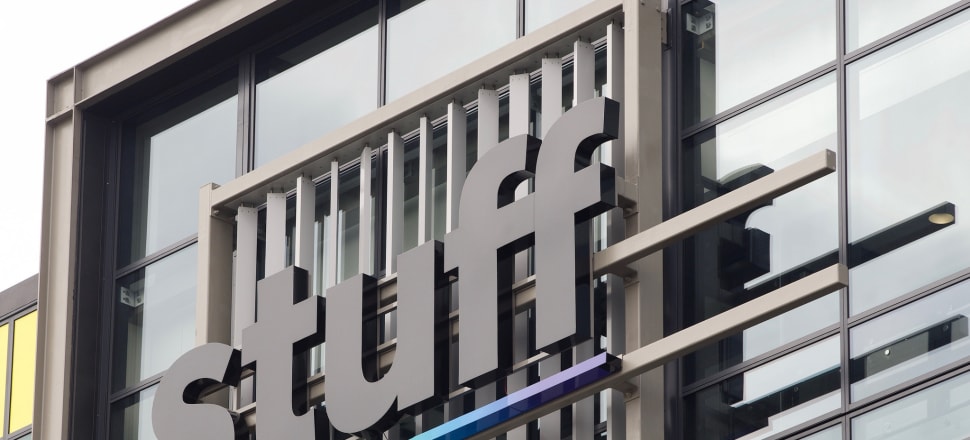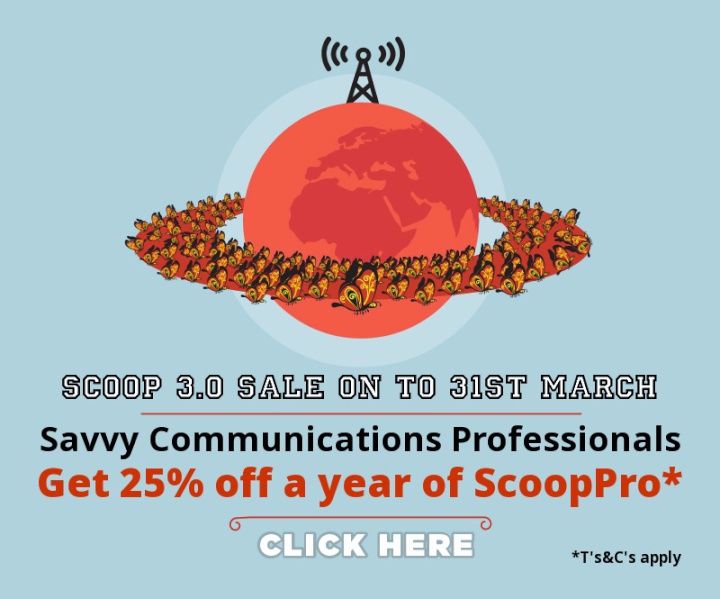... and the dawn of something much
better?

Illustration by Lukas Kouwets, Momkai for the Membership Puzzle Project
2019 looks like it might well be another really bad, terrible, not so good year for the traditional journalism model globally. Already in January three leading US digital outlets—BuzzFeed, the Huffington Post, and Vice announced layoffs that have left many accomplished journalists unemployed. Consolidation of journalism looks set to continue unabated as larger media conglomerates swallow up smaller players globally. We also appear to be witnessing the death throes of the concept of ‘objective’ truth in journalism. However, perhaps that is not at all as bad as it sounds, and we are just finally waking up to the reality that it never really existed in the first place. Also, on the positive side, smaller independent players with innovative digital models and a more open approach like our ScoopPro service look likely to be more relevant than ever to their reader communities in this increasingly fractured and homogenised media environment.
Blood in the
Water

When an industry is bleeding, it tends to bring out the sharks —now, it seems even the sharks are being attacked by other sharks. Take the Gannett newspaper chain: one of the largest players in a shrunken industry, it owns dozens of leading papers across the US, including flagships such as USA Today and the Detroit Free Press. Some see it as a perfect candidate to snap up some of the other players in the market. However, unfortunately for Gannett, competitor Digital First Media has thrown a large wrench into the works, by quietly acquiring 7.5 percent of the chain's stock as a prelude to launching a takeover bid of Gannett.
The Drum notes that since Gannett owns Newsquest, a major UK newspaper publisher, any move to acquire Gannett could set off a consolidation spree in Great Britain as well. Also in the UK, an independent, government-commissioned report on the state of the media industry warns that closure of local newspapers threatens democracy. The Cairncross review concluded that many local newspapers are owned by debt-laden publishers which have cut investment and sacked hundreds of journalists in an effort to maintain profit margins. It also called for public funding to be made available to rescue local journalism, and recommended an investigation into the tech giants’ advertising market dominance, and a new regulator to ensure their fair treatment of publishers.
Here in New Zealand, in 2018, Australian Nine Entertainment took over Stuff’s parent company Fairfax Media. The impact of this merger on the future ownership of Stuff and its New Zealand media holdings remain unknown, but speculation abounds that it will be sold off. Likely buyers could be Mediaworks or NZME or even TVNZ, in each case, leading to further consolidation (and potentially more commerce commission complications). Stuff's earnings before interest, tax, depreciation and amortisation shrank 27 per cent to $40.5m in the year ended June 2018. Revenue fell 7.5 per cent to $301.4m. The NZ print newspaper market also shrunk considerably last year after Stuff closed more than 35% of its print newspapers and announced additional cuts in community papers.

In November 2018, MediaWorks also announced that it had signed a conditional merger agreement with Australian outdoor advertising company QMS. If the deal goes through, QMS will have a substantial shareholding in MediaWorks, however, current owner Oaktree Capital Management will maintain the majority shareholding in the merged entity. Stuff's news clout and large digital assets would add another appealing layer to the MediaWorks offering. However, such a deal seems unlikely to get past the Commerce Commission, which has already shown a strong tendency to protect media plurality.
Is all of this talk of mergers and acquisitions and positive outlooks just reshuffling deckchairs on the Titanic? Probably. Both Herald and Stuff, NZ’s biggest digital players, are now essentially making nothing after tax and amortisation etc, and both have now stopped paying dividends. It appears that they are persisting in fudging their revenue statistics to make things seem rosier than the reality. Why? Because they are denial about how bad things are in the online Media industry. They are afraid that talking about this will have a further negative impact on their dwindling advertising revenues.

Find out More about ScoopPro and the 2019 25% off sale
One of the most positive aspects of the ScoopPro revenue model is that we are no longer reliant on these advertising revenues to stay alive, making us more resilient than most. Looking around the NZ online media, not many other organisations can say this right now. With a few exceptions like NBR and ODT (Paywall) and Newsroom (NewsroomPro although still reliant on sponsorship) and Stuff (Various associated offerings like Fibre and streaming services), the majority of newsrooms seem to be reliant on either advertising revenue or sponsorship market. In 2018, NZME (the NZ Herald) announced the introduction of digital subscriptions for its premium content, but the exact launch time has not been announced. Many other publishers will probably follow suit in 2019, however, exactly how much revenue this approach will bring them is yet to be seen.
The Unique
ScoopPro Business Model
The ScoopPro business solution differs to these other revenue models in that it is neither ad based, nor a traditional paywall or a ‘Freemium’ news service, and is we think a far more robust and innovative model. ScoopPro is based on an ‘ethical paywall’ that does not unethically restrict the amount of news made available to our non paying audience. In this age of decreasing independent media voices, we do not believe such restrictive and elitist ‘freemium’ models are ethical or good for society.
Rather, ScoopPro is a service specifically targeted at professional users of Scoop and seeking to add more value to these customers through services such as a news monitoring and intelligence service and an InfoPages page for enhanced visibility of members’ news items and branding on Scoop. This makes ScoopPro a solid investment opportunity with much potential for growth in 2019 and beyond.
In fact, we are currently in discussions with The Membership Puzzle Project regarding the possibility of support from their global ‘Membership In News Fund’ for this innovative ScoopPro membership model. Being selected for further consideration out of a large pool of applicants was a huge morale boost for Scoop and recognition of the unique nature of our model.

Learn more about Joining ScoopPro and supporting this growth
The End of
Objectivity?
The fingers of blame for all these takeovers and layoffs of journalists are of course quick to point at the great bogeymen of our media age—Facebook and Google. Many have rightly warned about the threat to democracy posed by this trend. Democratic Rep. Alexandria Ocasio-Cortez, for example, has highlighted tech monopolies and concentrated media ownership as the biggest threats to democracy.
Gonna keep it : The biggest threats to journalism right now are tech monopolies & concentration of ownership.
Healthy democracy *requires* high-quality journalism.
W/o a wide range of independent outlets & the revenue to sustain them, our democracy will continue to crumble.
— Alexandria Ocasio-Cortez (@AOC) January 26, 2019
There is certainly a lot of truth in that critique, however maybe that is not the end of the story. Antonio García Mar postulates that perhaps American journalism isn’t dying, it’s just returning to its opinionated roots. Instead, he says, what is dying is that flavor of ‘objective’ journalism that purports (usually without basis) to record an unbiased account of world events:
“We take journalistic objectivity to be as natural and immutable as the stars, but it’s a relatively short-lived artifact of 20th-century America.”
García Mar continues:
“ ‘Objectivity’ is an atavism from the days of studiously inoffensive and circulation-expanding reportage lavishly supported by unquestioning advertiser budgets. That’s all gone now. And it’s not clear that this studious “objectivity” more closely approximates the truth. Iraq and the WMDs? Madame President? Those were headlines produced under rigorously “objective” (and wrong) coverage, while those who got it right—and there were some—spoke from less regimented perches.”
More support for this viewpoint comes from The View from Somewhere, a new podcast by Lewis Raven Wallace exploring the fraught history of journalistic objectivity. “A lot of great journalism in the United States and all over the world has been journalism that stood for something,” says Wallace, who was fired by American Public Media’s Marketplace in 2017 after he refused to delete a blog post questioning the value of traditional objectivity. “Standing up to power requires standing for something.”
As the US political commentator Michael Parenti once observed: 'Bias in favor of the orthodox is frequently mistaken for "objectivity". Departures from this ideological orthodoxy are themselves dismissed as ideological.'
Looking at the purportedly ‘objective’ mainstream media coverage of the current Venezuela crisis, which is incredibly similar to the ‘consent manufacturing’ narratives of the Iraq and Libya invasions, I am inclined to agree with this view. The general approach of the supposedly ‘objective’ mainstream media to Venezuela (including the anti-trump self-described ‘resistance’ media) has almost unilaterally fallen in unquestioningly behind the Trump administration’s party line in support for military intervention whilst ignoring the facts, such as the effects of illegal US sanctions and ongoing covert activities to destabilise the country. If the idea of the mainstream liberal media as the dispenser of ‘objective’ truth is behind such manipulation of the population into support for such abominations, then I want no part in it, and will certainly not shed a tear for its demise.

The highly negative side of this Balkanisation of the US media is of course the increased success of highly partisan journalism such as Fox News and other rabidly neocon news outlets. Winners in this polarised environment on the left seem to be The Times and the Washington Post, both highly critical of Trump. In January The Times reported a record $708 million in digital revenue for 2018, helped by a 27 percent jump in subscriptions. It seems that in a polarised society, people are seeking out the news that confirms their existing bias leading to opposing echo chambers and ‘filter bubbles’ and very little compromise or real dialogue. However, arguably an ‘objective’ journalism environment is exactly what has allowed such ‘news’ providers to have any credibility at all as something other than the opinion of a selection of (mostly white, male and wealthy) editors and shareholders. Perhaps the time has come more a more nuanced and mature approach to the understanding of ‘truth’ and ‘objectivity’ that is fit for today’s online media environment.
The Future
of Journalism is
Engagement

However, a more positive aspect of the movement away from this ‘objective’ journalism is the rise of a particular hybrid of robust investigation and opinion oriented journalism. The independent and member funded ‘engaged journalism’ approach has been pioneered by De Correspondent in the Netherlands and has been studied extensively by Jay Rosen and team at the Membership Puzzle Project in the USA. This ‘engaged’ journalism approach “seeks to build a newsroom optimized for trust” and taking into account the needs and views of the community of readers by harnessing the depth of knowledge of the wider community of readers and subject experts.
Call it what you like; ‘engaged journalism’, ‘community centred journalism’ or ‘collaborative journalism’, this approach seems to be resonating with audiences. Last month, The Correspondent, the English-language expansion of the Dutch news site, smashed through the US$2.5 million target for its launch crowdfunding campaign by more than $100,000 with over 40,000 members joining.
This De Correspondent approach does not censor or force its journalists to pretend to be objective. Rather De Correspondent allows its journalists scope to form an opinion and take a transparency, usually ‘solutions-focused’, approach to investigations in collaboration with the input of readers. De Correspondent journalists are expected to offer their readers transparency via access to their train of thought leading up to the definitive story and can be open about any problems they have with truth verification and challenges to interpret what they learn, observe, or experience.
Founder Rob Wijnberg believes this conception of journalism should not be equated with partisan reporting or with the “journalism of assertion” for that matter. Although subjectivity and personality is embraced, independent truth verification remains at the heart of De Correspondent’s journalism practice. Yet, by acknowledging the participatory culture and collective intelligence they tone down the universalistic connotation of “the truth” a notch. This approach recognises our current culture as “an era in which truth is no longer set in stone, but can be constantly updated and subsequently contested in thousands of responses below the article.
Another interesting approach pioneered by Cathrine Gyldensted in Denmark is called ‘constructive journalism’. Much like ‘solutions journalism,’ this approach focuses on reporting news in a more engaging, constructive way. A central component of such an approach is the “wellbeing model of the world”, in which journalists challenge their default setting of seeing people as victims to also see them as people with strengths and resilience – and report on that too. Such an approach could attempt to encourage collaboration between politicians or opposing sides of a debate, thus helping to break down silos and promote more understanding and dialogue in online discourse.
‘Scoop 3.0’ - Engaged
Journalism in New
Zealand

“Scoop 3.0” is our reaction to this trend of forward thinking news organisations towards more engaged, meaningful and constructive local journalism. We already have an approach that seeks to engage our ScoopPro members as subscribers and part of a collaborative news ecosystem. This year we want to extend this approach by executing our exciting “Scoop 3.0” plan which includes a crowd equity raise to decentralise Scoop’s ownership and develop new features to serve our members and the wider New Zealand community.
Part of this “Scoop 3.0” plan is to create an ‘engaged journalism’ approach that gives greater opportunities for readers and our 250+ ScoopPro organisations to engage with our journalistic investigations. We truly believe this approach can play a big part in building a more positive and inclusive future for journalism in New Zealand. It is no secret our society is facing some big challenges in the future including climate change, inequality, apathy and increased polarisation. Perhaps, in such an environment, a more transparent, participatory and nuanced approach to exploring ‘truth’ and ‘objectivity’ in journalism is just what is needed.
Scoop generally seeks to present many views of an argument or debate, rather than pretending impartial coverage while retaining a subtle bias in the reporting. Critics of Scoop’s approach from within the liberal ‘objective’ media tradition seem to consider that publishing raw press releases is a lesser form of Media coverage. However, Scoop’s open approach to providing access to its media platform is highly popular with the readers we serve. It is also arguably highly important for democracy and pluralism to present such a range of views. For this reason, Scoop is a very comprehensive media source and our ScoopPro service remains more useful to professional communicators than many other independent media platforms.
With a Little Help From
Our
Friends...
In the last few months of 2018 Scoop raised $36,000 from over 260 donations, and over 25 new organisations joining ScoopPro in a combined crowdfunding/Scoop crowd sale. We were humbled and excited by this show of support for the ambitious “Scoop 3.0” plan. This result also takes the total ScoopPro organisation count to 250 and gives us the resources needed to proceed with planning for this 2019 year which will be a huge one for Scoop.
However, crucially in order to execute this planned equity raise, we need to demonstrate that this ScoopPro revenue stream is a viable business model. I hear that potential investors like to see stuff like that, ie that your media company actually has a plan and a solid business model that brings in money. The good news is we do.
We have crunched the numbers and concluded that getting to a milestone of 300 ScoopPro organisations will make the ScoopPro service self-sufficient and render it a viable, or dare I say it, attractive media business for investors to get behind. The combined revenue from the 250 current ScoopPro organisations varies from only two hundred per year from the smaller organisations on an essential package through to a few thousand from the larger ones opting for a premium service. Overall ScoopPro currently generates around 90% of Scoop’s total revenue and operational overheads in running the Scoop.co.nz website per year.
We are calling these 300 early adopting organisations the ‘ScoopPro Founding 300’ in recognition of the crucial role they will play in Scoop’s development by helping us reach this sustainability point. We are now offering 25% off all annual packages in an end of financial sale to encourage these 50 additional organisations to jump on board.
Getting to the milestone of 300 organisations on annual ScoopPro packages is essential to our plans as it will push this ScoopPro derived revenue jumps up above 100% of our overheads. This will mean we can start investing further into developing the scoop.co.nz website and the ScoopPro service into a valuable communications tool for our professional readers (and others.) Not only will this keep ScoopPro running but it will allow us to keep the rest of the Scoop enterprise alive. The two are intricately connected. There would be no ScoopPro service without the news published on Scoop.co.nz as this forms the raw data that we then send out to subscribing organisations. There would also be no platform providing a valuable channel on which ScoopPro clients are willing to pay to have their own InfoPage aggregating all their news published on Scoop.
The
“Scoop 3.0” Plan in
2019
So the kickass plan for “Scoop 3.0” in 2019 looks like this:
1. Run a kickass marketing campaign to convince just 50 more ethical organisations and savvy communications professionals to join the ScoopPro service. See the ScoopPro 2019 sale offering 25% off all packages now.
2. Prepare Scoop for an equity crowd investment by Finalising the ‘Scoop 3.0’ plan and getting some professional legal and marketing advice and preparing all the right documents.
3. Run an equally kickass Equity Crowdfunding campaign on PledgeMe giving our readers and ScoopPro members a chance to invest in the Scoop 3.0 business plan.
4. Start rolling out the Scoop 3.0 plan - including new layout and features on Scoop and ScoopPro and a new ‘engaged journalism’ approach on Scoop collaborating with readers and organisations on producing kickass journalism collaboratively.
To join ScoopPro and help us in this effort to secure the ‘founding 300’ members, register now for the Scoop end of financial year sale and get 25% off all ScoopPro packages.
>>>>>Click here to learn more and claim 25% off<<<<<



 Eugene Doyle: The Fall Of Saigon 1975 - Fifty Years Of Repeating What Was Forgotten
Eugene Doyle: The Fall Of Saigon 1975 - Fifty Years Of Repeating What Was Forgotten Peter Dunne: Dunne's Weekly - Trump's Tariffs Still Pose Risks For New Zealand
Peter Dunne: Dunne's Weekly - Trump's Tariffs Still Pose Risks For New Zealand Keith Rankin: Barbecued Hamburgers And Churchill's Bestie
Keith Rankin: Barbecued Hamburgers And Churchill's Bestie Gordon Campbell: On Why The US Stands To Lose The Tariff Wars
Gordon Campbell: On Why The US Stands To Lose The Tariff Wars Eugene Doyle: Before It’s Too Late - Reimagine New Zealand’s Military Future
Eugene Doyle: Before It’s Too Late - Reimagine New Zealand’s Military Future  Binoy Kampmark: Gender Stunts In Space - Blue Origin’s Female Celebrity Envoys
Binoy Kampmark: Gender Stunts In Space - Blue Origin’s Female Celebrity Envoys